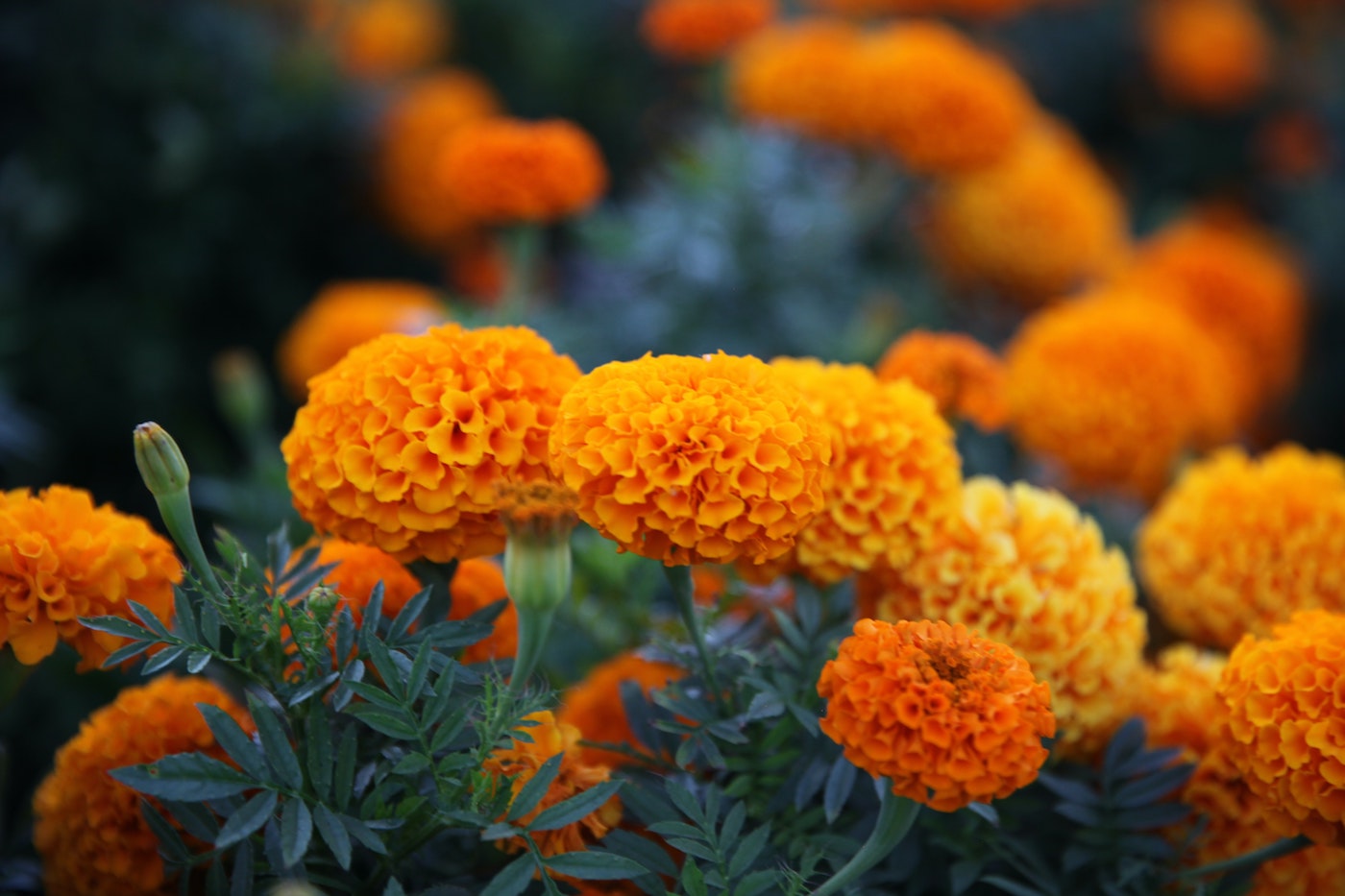Delve Into the Marvelous World of Flowers
Photo cred: M. Dagli
Laura’s mentioned her love and appreciation of flowers many times in the past (fun fact: it’s her absolute favorite gift to receive). Recently we were sitting in the office and talking about some flowers here in Wilmington that we both love, and we realized how little we know about flowers, and that’s the case with a lot of us these days. Many of us, Laura and myself included, want to become more in touch with nature. Even just knowing more about the types of trees you pass on the way to work can help you have a deeper understanding of the world around you. Since most of us out there love a beautiful bouquet or garden of flowers, I thought it would be fun to share what we’ve learned about some of the most popular and well-loved flowers (17 to be exact). Not only are they pretty to look at, but some of them have the most fascinating backstories. Keen to learn more? Continue scrolling and read on!
Roses
Despite what the poem says, not all roses are red. Roses (rosa) vary in size, shape and color, ranging from white to yellows and reds. Most species are native to Asia and bloom on and off throughout mid-spring and fall, making them among the most desirable garden plants. They’re also widely grown because of their beauty and fragrance. The ancient Greeks and Romans associated roses with Aphrodite/Venus, the goddess of love. Roses have been a symbol of love and passion for hundreds of years and will continue to spread love for millennia to come.
Tulips
Tulips (tulipa gesneriana) are members of the lily family. Since the seventeenth century, this classic flower has become widely cultivated but they were originally found in a region stretching from Southern Europe to Central Asia. Tulips blossom in the spring into large, brightly colored flowers, resembling a turban, therefore being named after the Persian word for turban. These red, purple, pink, orange, yellow, or white flowers are ideal to give to a partner or family member because they symbolize deep, unconditional love.
Carnations
Dianthus caryophyllus, more commonly known as carnations, express feelings of love, fascination, and distinction. The sweetly scented spring-blooming flowers have been genetically modified to bloom in many different colors, but the natural flower color is bright pinkish-purple. Its exact origin is unknown because carnations have been extensively cultivated for the last 2,000 years, but many believe that they are native to the Mediterranean region.
Azaleas
I was so excited to write about Wilmington’s unique annual Azalea festival, but after doing some research, I’ve come to find out that azaleas, aka rhododendron, are actually native to several continents including Asia, Europe and North America. Every spring when azaleas bloom, there are festivals all around the world celebrating the beautiful lip tint… I mean flower ;) Although our own Azalea lip tint is bright pink, azaleas also come in lavender-pink, bright red, soft white, and coral with white accents. The azalea is known as the “thinking of home bush” in Chinese culture; no wonder why everyone wants to have their own Azalea festival.Fun fact: “Azalea” was the first lip tint color name that Laura decided on, and it was years before they moved to Wilmington, the city of the Azalea festival. She says that she remembers “Azalea” being the easiest tint name, and that it just came to her as soon as the tint color was finalized. Seems like kismet, doesn’t it? <3

Orchids
Orchids (orchidaceae) are the largest family of flowering plants, with over 20,000 species in the world. This exotic flower can produce white, pink, yellow, purple, or orange foliage, and has origins in every continent with the exception of Antarctica. Orchids are known for their fragrance and are widely used in perfumes and aromatherapy.Vanilla extract, a commonly used flavor enhancer, and something you may have in your pantry right now, is also derived from the orchid plant, more specifically the vanilla orchid plant. Orchids are said to be powerful aphrodisiacs in many cultures so it’s only fitting that they're associated with love, fertility and elegance.

Daisies
Bellis perennis, a.k.a the common daisy or English daisy, can sometimes be called the “lawn daisy” because of this species’ reputation of colonizing lawns. These delicate flowers are native to western, central and northern Europe. Their bright white petals and yellow center generally bloom between early to mid-summer. The name "daisy" stems from the words “day's eye” because the flower heads close at night and open in the morning. During the day, daisies follow the position of the sun in the sky for optimal sunlight, similar to sunflowers. Daises are known to symbolize innocence and purity.
Peonies
Paeonia, the only genus in the Paeoniaceae family, is native to Asia, Europe and Western North America. These large, wonderfully fragrant flowers bloom in late spring and early summer and are popular garden plants because of their bright, colorful petals, ranging from purple and pink to red, white or even yellow. They’re also one of Laura’s favorite flowers! According to ancient Chinese texts, peonies were also used for flavoring food. Many people believe that peonies bring prosperity, good luck, love and honor.
Sunflowers
Sunflowers are actually part of the daisy (Asteraceae) family but their scientific name is helianthus annuus. As you can probably guess, sunflowers got their name from the bright yellow petals and round flower heads that resemble the sun. They typically grow during the summer, into early fall and have a tendency to spread rapidly. Sunflowers originated in the Americas and were domesticated 3000–5000 years ago by Native Americans. To many Native American tribes, sunflowers represented a bountiful harvest because they were used as a source of edible seeds, which we still eat today. In China, people associate sunflowers with longevity, good fortune, and vitality.
Lilies
While many plants have "lily" in their common name, they’re not related to true lilies. Lilium (which are true lilies) originally got their name from the Hebrew word “Shoshannah” (שׁוֹשַׁנָּה), which was borrowed from the Egyptians. ‘Lily’ is now a popular name in almost every culture across the world. Most species of lilies are native to the northern hemisphere and bloom in late spring or summer. The flowers are large, often fragrant, and come in a wide range of colors including white, yellow, orange, pink, red and purple. The innocent beauty of the lily flower has given it the association of purity, fertility, and rebirth.
Hydrangeas
Hydrangeas, formally known as hydrangea macrophylla, are native to Asia and the Americas. These gorgeous flowers bloom from late spring to early fall and can be seen in white, blue, red, pink, light purple, or dark purple. In Japan, hydrangeas are associated with heartfelt emotion, understanding and apology because of a Japanese emperor long ago who gave his love hydrangeas as an apology for neglecting her. Contrastingly in Europe, hydrangeas were associated with arrogance and boastfulness because of the flowers’ ability to produce many flowers but very few seeds.
Chrysanthemum
Chrysanthemums, sometimes called mums or chrysanths, are native to east Asia and northeastern Europe. The name is derived from the Ancient Greek words: ‘chrysos,’ meaning ‘gold,’ and ‘anthemon,’ meaning ‘flower.’ This flower blooms in early autumn in white, yellow and red. Chrysanthemums signify life and rebirth in Asia, expression of sympathy in Europe, and respect and honor in America. Chrysanthemums are great flowers to have in the house because they’ve been shown to reduce indoor air pollution.
Magnolias
Magnolias are part of the Magnoliaceae family and have been around before bees evolved. These ancient flowers are theorized to have evolved to encourage pollination by beetles. You can find these spring blooming flowers in Asia and the Americas. The large flowers can be described as bowl or star-shaped and bloom in shades of white, pink, purple, green or yellow. Magnolias were named after a French botanist, Pierre Magnol, and symbolize dignity and nobility. In ancient China, magnolias were thought to be the perfect symbols of womanly beauty and gentleness.
Jasmine
Jasmine (jasminum) is native to tropical and subtropical regions of Eurasia, Australasia and Oceania. Their small, fragrant flowers bloom at night with such a powerful scent that the aroma can be experienced from near and far. Unsurprisingly, jasmine is widely used in perfumery, candles, etc. Jasmine is more notably a representation of love, beauty or sensuality, however their pure white blossoms can also symbolize purity.
Marigold
Tagetes, aka marigolds, are also part of the sunflower family Asteraceae. They’re commonly referred to as the ‘herb of the sun’ because we associate the flowers’ fiery yellow, orange, and red hues with the warmth, happiness, and optimism that the sun provides. The English name, Marigold, is derived from ‘Mary's gold,’ and was originally applied to a similar plant. Native to the Americas, this musky, pungent scented flower blooms continuously throughout summer and fall.
Lavender
Lavender (lavandula) is a highly fragrant flower from the west of the Mediterranean that blooms in late spring to early summer. The Romans used to use lavender to keep their laundry fresh and perfume their baths. The English word ‘lavender’ is thought to be derived from the Latin word ‘lavare,’ meaning ‘to wash’. The strong scent of lavender is still largely used today in the perfume industry. These flowers are known to represent purity, devotion, serenity, and grace. Lavender flowers are often mauve, violet or lilac but can sometimes even be blue. The most common shade associated with lavender is a light pinkish-purple, which is exactly what the aptly named “lavender” color is associated with.
Twinflower
Linnaea borealis, or twinflower, can be found in parts of Europe, Asia and North America and has been around since the Ice Age. The genus linnaea was named after Swedish botanist and father of modern taxonomy, Carl Linnaeus, as the twinflower was his favorite flower. The twinflower is the national flower of Sweden and gets its name from the dual, pendulous flowers. The extract from these pale pink fragrant flowers also happen to be in our Blomma hand cream.
Cherry Blossoms
Cherry blossoms (prunus serrulata) bloom from March to April in the northern hemisphere. They likely originated in Eurasia before migrating to Japan and becoming the country's national flower. Although ornamental cherry trees produce fruit, they’re mostly grown because of their breathtaking beauty. Cherry blossoms are often used in many traditional Japanese sweets and teas because of their bold flavor. The flowers also have a strong scent so you will often find cherry blossom present in perfumes. Cherry blossoms are usually pale pink, bright pink and white/ivory in color and represent beauty, life, mortality, and rebirth.



